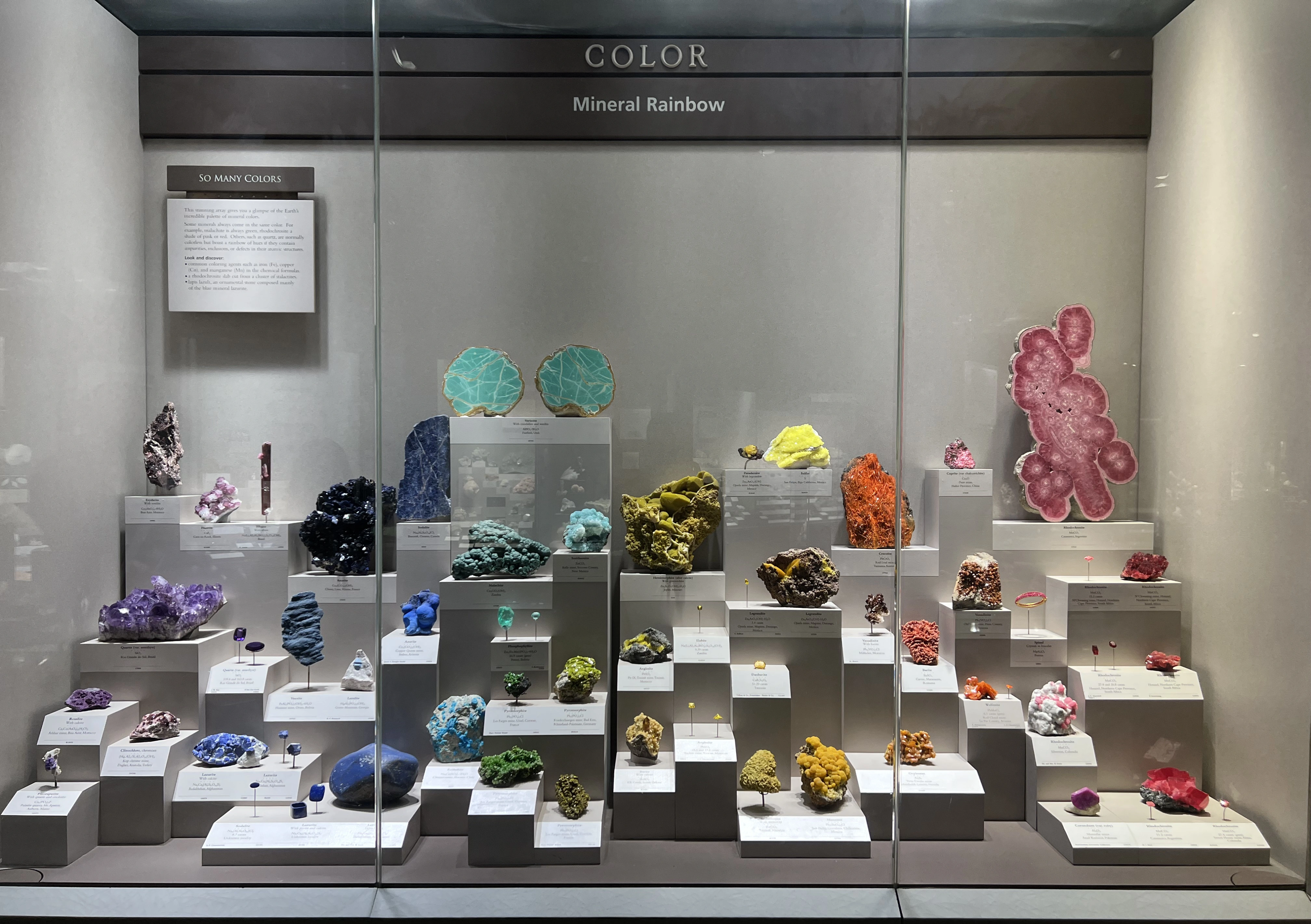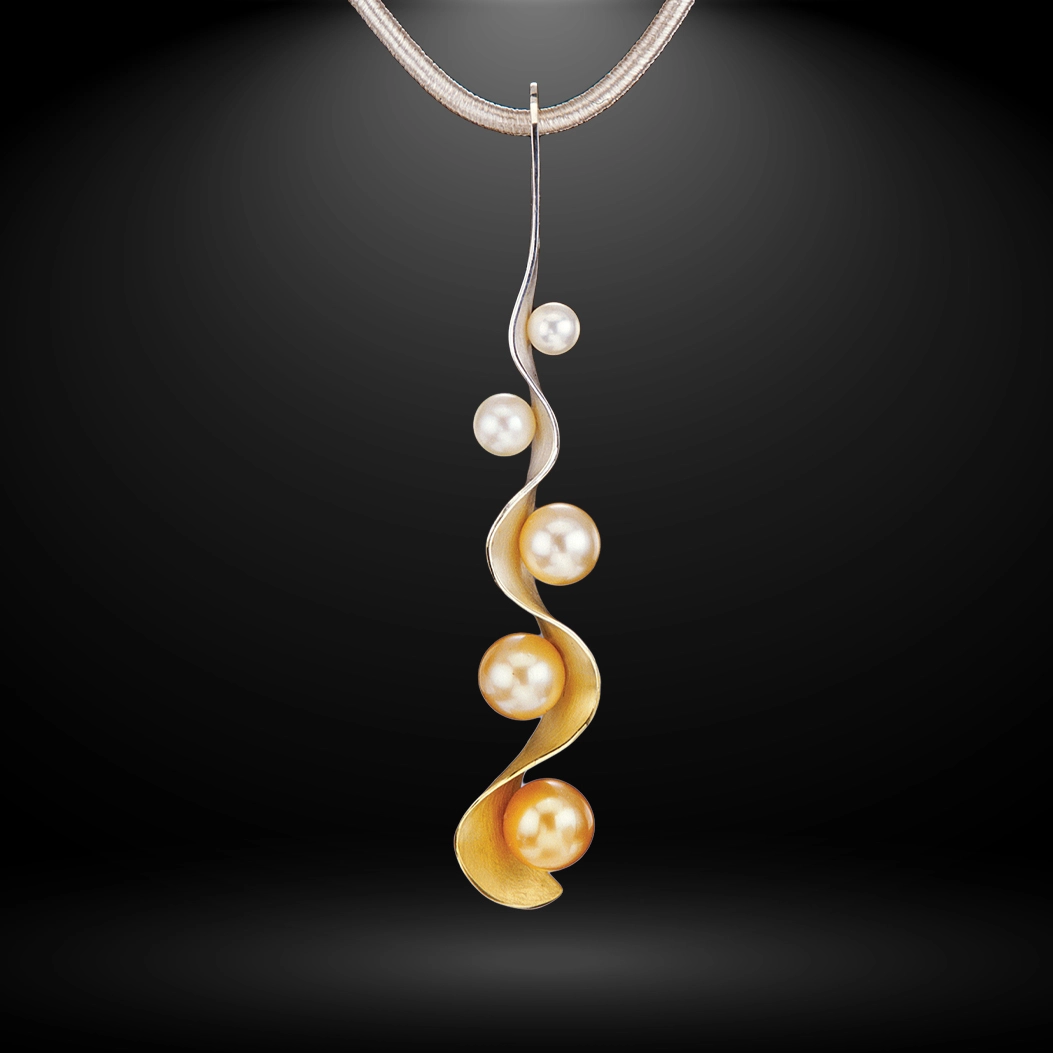JEWELS MAKING HISTORY
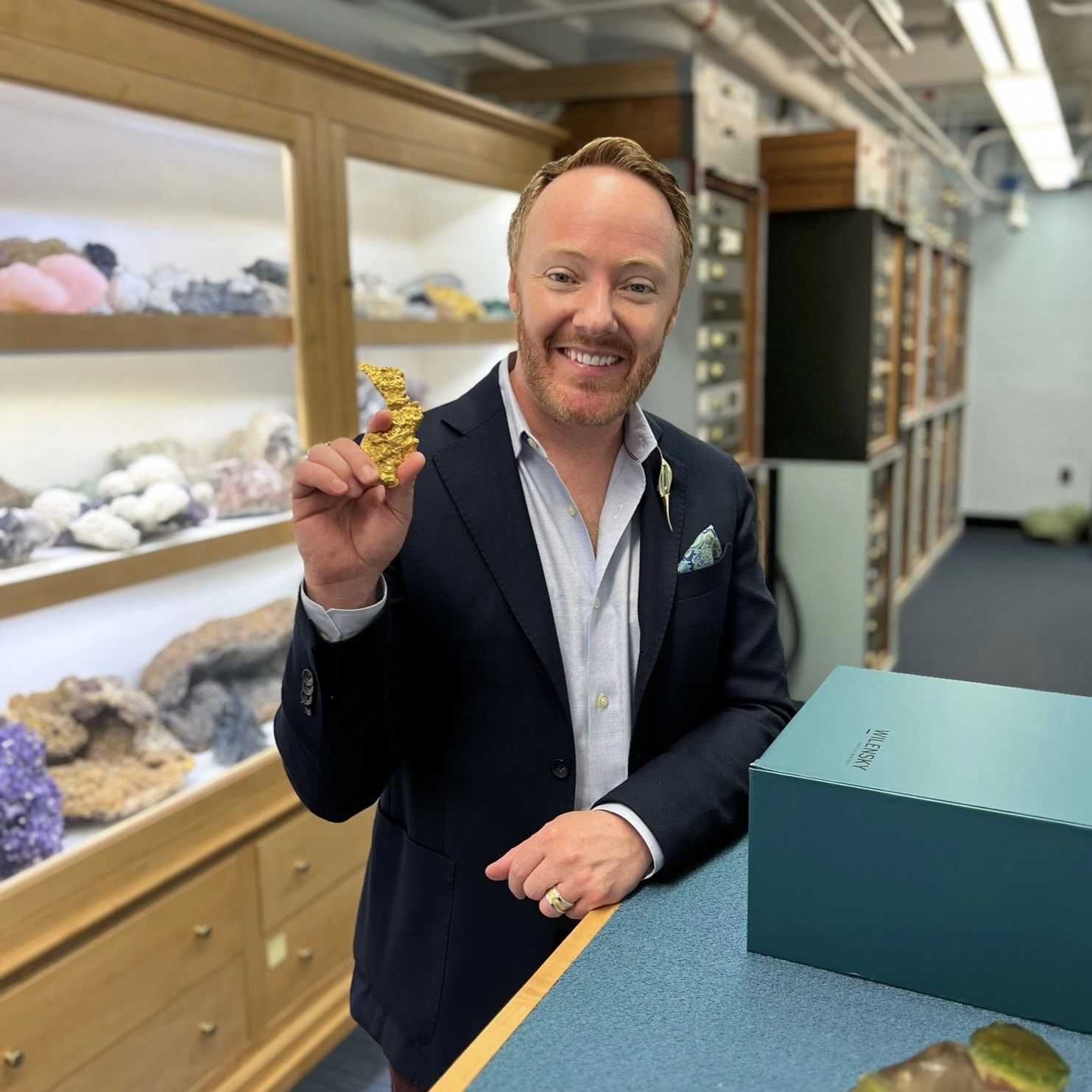
How do gems & minerals become a part of our history? In cultures around the world, articles of jewelry are prized not only for their intrinsic value but also as precious cultural artifacts. From the crown jewels of European kingdoms, to the Imperial Regalia of Ethiopia and the Holy Sword, Crown Jewels, and Mirror of Japan, these items often symbolize legacies of power. As a country without a history of monarchy, the United States of America has no regalia, but the nation is nonetheless rich in national treasure. As proof, one need look no further than the vast holdings of the Smithsonian Institution, the world’s largest museum and research complex, which belongs not to royalty, but to every American citizen.
“The Gem & Mineral hall within the Smithsonian Natural History Museum is beautiful beyond words and I’m honored to be part of this extraordinary collection.” -Adam Neeley
More than 175 years ago, patron James Smithson hoped to enrich the scientific and cultural development of the United States with an endowment for a public institution of learning and research. The resulting Smithsonian Institution has grown into a wondrous and comprehensive group of 21 museums and the National Zoo. As a mineralogist, Smithson would surely have been delighted to learn that his namesake institution curates one of the premier collections of gems and minerals in the world. Housed within the National Museum of Natural History, the Janet Annenberg Hooker Hall of Geology, Gems, and Minerals is a magnificent treasure trove of more than 600,000 geological specimens.

How do gems & minerals become a part of our history? In cultures around the world, articles of jewelry are prized not only for their intrinsic value but also as precious cultural artifacts. From the crown jewels of European kingdoms, to the Imperial Regalia of Ethiopia and the Holy Sword, Crown Jewels, and Mirror of Japan, these items often symbolize legacies of power. As a country without a history of monarchy, the United States of America has no regalia, but the nation is nonetheless rich in national treasure. As proof, one need look no further than the vast holdings of the Smithsonian Institution, the world’s largest museum and research complex, which belongs not to royalty, but to every American citizen.
“The Gem & Mineral hall within the Smithsonian Natural History Museum is beautiful beyond words and I’m honored to be part of this extraordinary collection.” -Adam Neeley
More than 175 years ago, patron James Smithson hoped to enrich the scientific and cultural development of the United States with an endowment for a public institution of learning and research. The resulting Smithsonian Institution has grown into a wondrous and comprehensive group of 21 museums and the National Zoo. As a mineralogist, Smithson would surely have been delighted to learn that his namesake institution curates one of the premier collections of gems and minerals in the world. Housed within the National Museum of Natural History, the Janet Annenberg Hooker Hall of Geology, Gems, and Minerals is a magnificent treasure trove of more than 600,000 geological specimens.
The Janet Annenberg Hooker Hall of Geology, Gems, and Minerals
Visitors to the Janet Annenberg Hooker Hall enter a grand, softly-lit space with glowing exhibition cases, drawing the eye from specimen to fascinating specimen. Of particular interest to any gem-lover: these hallowed halls are home to over 10,000 dazzling gemstones. Through the displays, curators guide visitors on a journey through time, both on the awe-inspiring scale of geological forces and through the resplendent history of gemstones in jewelry. Behind the scenes, the museum hosts a world-class mineral research wing, as well as the Gem Vault, a protected space to secure the collection’s highest value jewels and new additions.
The Janet Annenberg Hooker Hall of Geology, Gems, and Minerals
Visitors to the Janet Annenberg Hooker Hall enter a grand, softly-lit space with glowing exhibition cases, drawing the eye from specimen to fascinating specimen. Of particular interest to any gem-lover: these hallowed halls are home to over 10,000 dazzling gemstones. Through the displays, curators guide visitors on a journey through time, both on the awe-inspiring scale of geological forces and through the resplendent history of gemstones in jewelry. Behind the scenes, the museum hosts a world-class mineral research wing, as well as the Gem Vault, a protected space to secure the collection’s highest value jewels and new additions.
JEWELS MAKING HISTORY: Gem & Mineral Hall Collection Highlights
The Dom Pedro Aquamarine
This captivating 4.6-pound gem is one of the largest aquamarine gems in the world. Cut from an enormous 100-pound crystal found in a Brazilian pegmatite field, Dom Pedro is a beryl which owes its radiant blue-green color to iron impurities. World-renowned German lapidary Bernd Munsteiner cut this impressive obelisk in 1992 and 1993, taking inspiration for its artful fantasy-cut from the tubular peculiarities natural to the rough gem. Using a “negative-cutting” technique, Munsteiner carved intricate facets into the back faces of the gem, reflecting its vivid color and creating a glowing effect.
The Dom Pedro Aquamarine
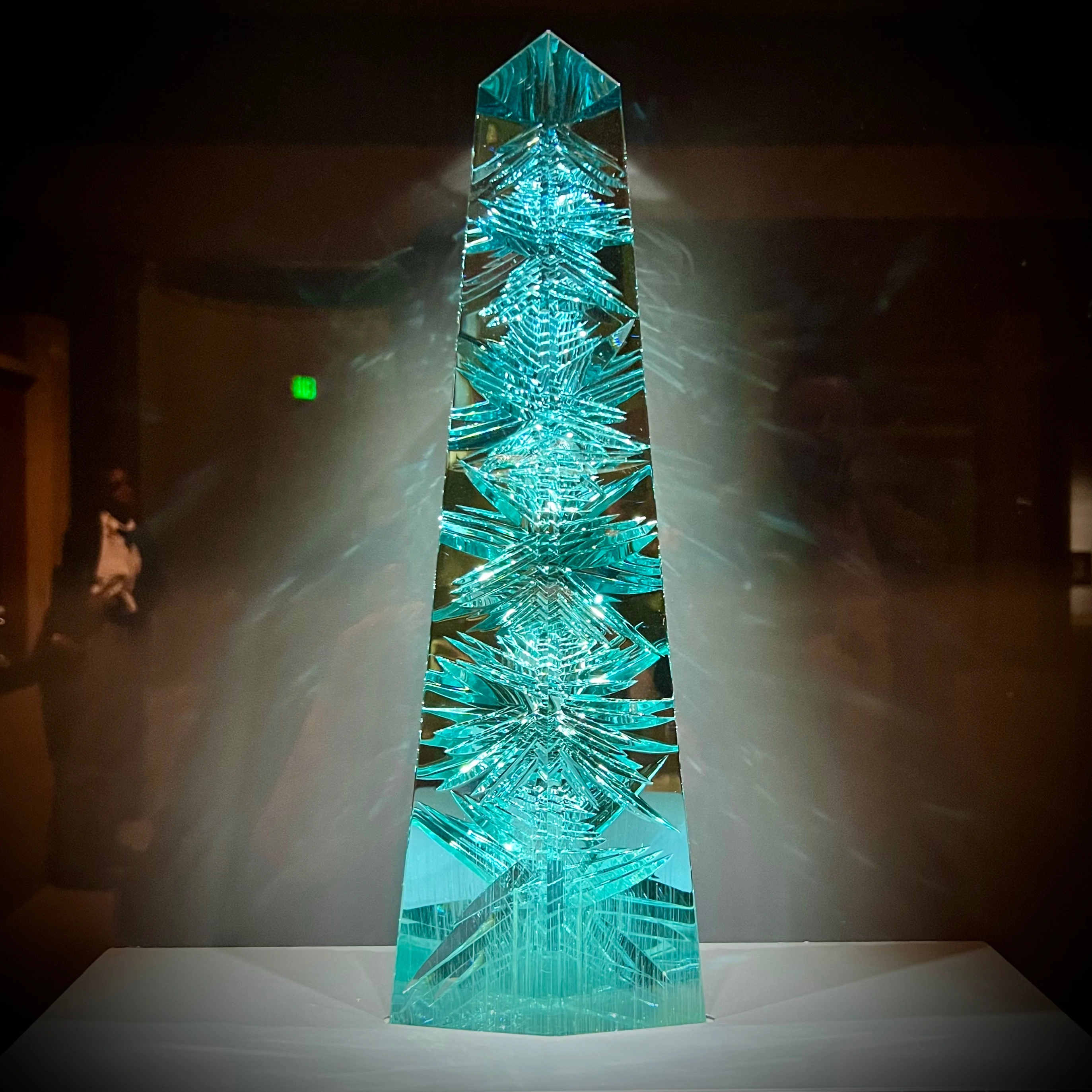
This captivating 4.6-pound gem is one of the largest aquamarine gems in the world. Cut from an enormous 100-pound crystal found in a Brazilian pegmatite field, Dom Pedro is a beryl which owes its radiant blue-green color to iron impurities. World-renowned German lapidary Bernd Munsteiner cut this impressive obelisk in 1992 and 1993, taking inspiration for its artful fantasy-cut from the tubular peculiarities natural to the rough gem. Using a “negative-cutting” technique, Munsteiner carved intricate facets into the back faces of the gem, reflecting its vivid color and creating a glowing effect.
Photo by Smithsonian Museum
The Hope Diamond
When 17th-century miners unearthed the 45.52-carat blue diamond in the Kollur Mine in what is today India, the world had never before seen a blue diamond. The diamond passed from owner to owner and across continents before the English banker Henry Philip Hope acquired it in the early 1800s. Thereafter known as the Hope diamond, the jewel became closely linked with tragic developments in the lives of those who possessed it. Its exquisite beauty, however, is beyond debate. The Hope Diamond’s rich and distinctive blue hue results from the presence of boron in its crystal structure. A stately antique cushion cut flaunts the gem’s clarity and vivid color. For all these reasons, the enigmatic Hope Diamond stands out as a centerpiece of the Smithsonian’s jewel collection.
The Hope Diamond
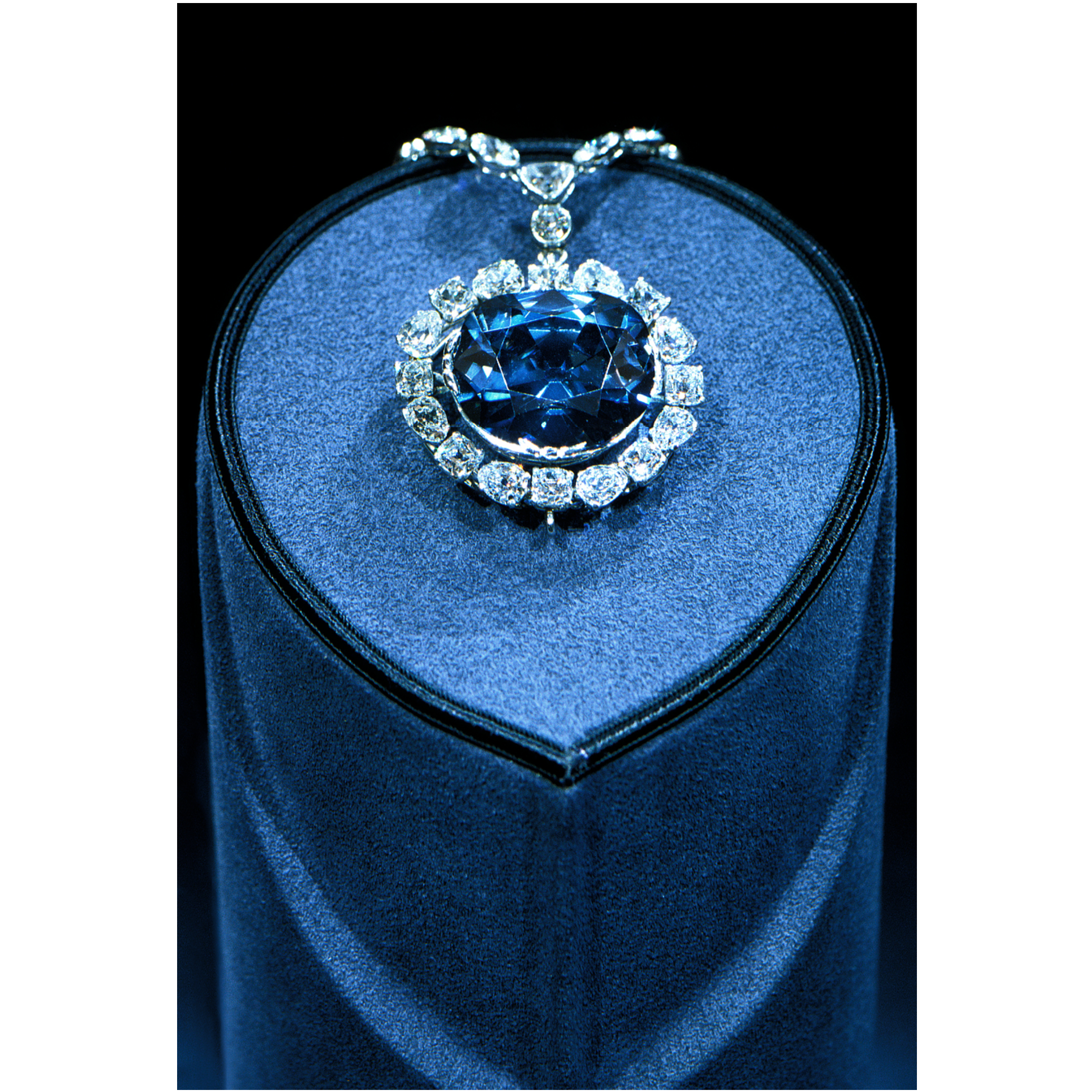
Photo by Smithsonian Museum
When 17th-century miners unearthed the 45.52-carat blue diamond in the Kollur Mine in what is today India, the world had never before seen a blue diamond. The diamond passed from owner to owner and across continents before the English banker Henry Philip Hope acquired it in the early 1800s. Thereafter known as the Hope diamond, the jewel became closely linked with tragic developments in the lives of those who possessed it. Its exquisite beauty, however, is beyond debate. The Hope Diamond’s rich and distinctive blue hue results from the presence of boron in its crystal structure. A stately antique cushion cut flaunts the gem’s clarity and vivid color. For all these reasons, the enigmatic Hope Diamond stands out as a centerpiece of the Smithsonian’s jewel collection.
The Lion of Merelani
First unveiled on April 20th, 2023, the Lion of Merelani is one of the most exciting colored gemstones to enter the collection in recent history. This opulent jewel was cut from a 283-carat brilliant green tsavorite find of exceptional quality discovered in Merelani in Northern Tanzania in 2017. In 2018, the talented lapidary Victor Tuzlukov fashioned the rough gem into the world’s largest square-cushion cut tsavorite. The jewel boasts 177 glimmering facets and a whopping 116.76 carats, making it 100 carats larger than the Smithsonian’s former largest tsavorite specimen. The privately owned gem and jewelry collection “Somewhere in the Rainbow” and legacy-miner Bruce Bridges gifted this enchanting gem to the Smithsonian collection. The Lion of Merelani memorializes Bruce Bridges’s father Campbell Bridges, the famous geologist who discovered tsavorite in Tanzania in 1967.
The Lion of Merelani
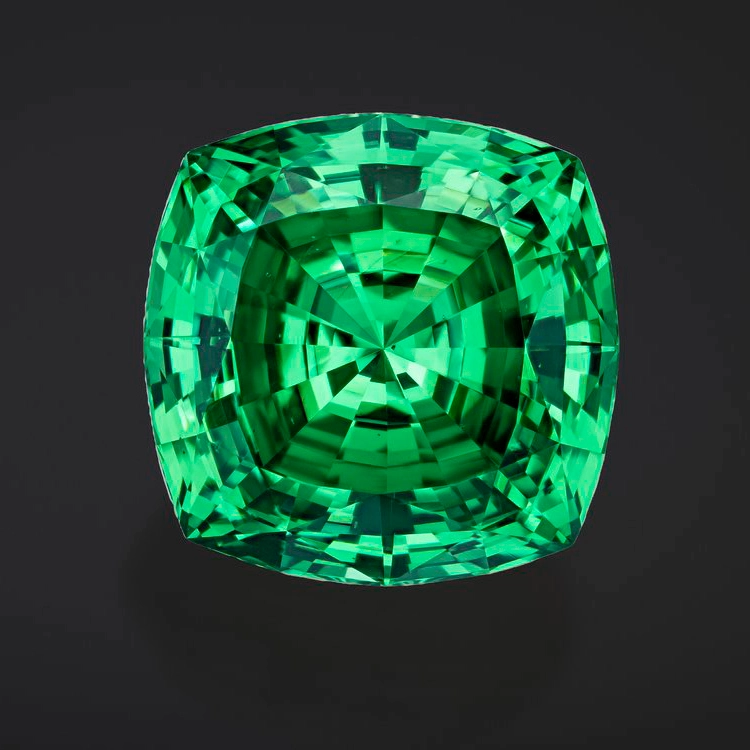
First unveiled on April 20th, 2023, the Lion of Merelani is one of the most exciting colored gemstones to enter the collection in recent history. This opulent jewel was cut from a 283-carat brilliant green tsavorite find of exceptional quality discovered in Merelani in Northern Tanzania in 2017. In 2018, the talented lapidary Victor Tuzlukov fashioned the rough gem into the world’s largest square-cushion cut tsavorite. The jewel boasts 177 glimmering facets and a whopping 116.76 carats, making it 100 carats larger than the Smithsonian’s former largest tsavorite specimen. The privately owned gem and jewelry collection “Somewhere in the Rainbow” and legacy-miner Bruce Bridges gifted this enchanting gem to the Smithsonian collection. The Lion of Merelani memorializes Bruce Bridges’s father Campbell Bridges, the famous geologist who discovered tsavorite in Tanzania in 1967.
The Logan Sapphire and More Gem Highlights
The collection’s extraordinary jewels include many other well-known and historical gems. For example, the Logan Sapphire, one of the world’s largest faceted sapphires, calls the museum home. It weighs in at an astonishing 423.99 carats and displays a luxurious deep blue color and fabulous clarity. Fabulous fancy yellow diamonds gifted by museum-namesake Janet Annenberg Hooker, sparkle alongside the stunning DeYoung red, and pink diamonds. Storied vault treasures include a diadem and necklace gifted to empress Marie-Louise by Napoleon, which flaunts 263 luxurious carats of diamonds. They keep company with a pair of Marie Antoinette’s earrings, whose intricate 18th-century design details and lavish use of diamond reflect the monarch’s notorious opulence.
The Logan Sapphire and More Gem Highlights
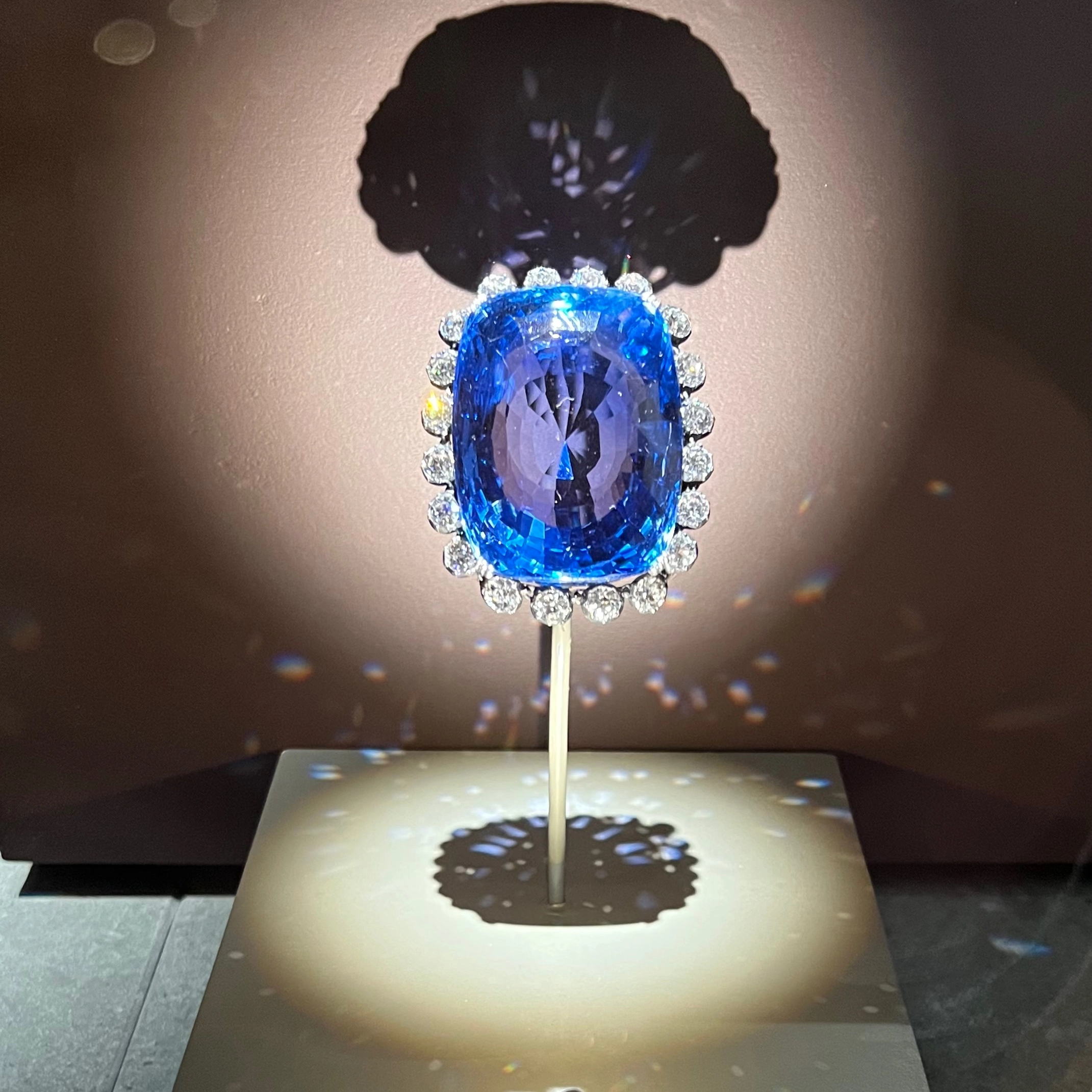
The collection’s extraordinary jewels include many other well-known and historical gems. For example, the Logan Sapphire, one of the world’s largest faceted sapphires, calls the museum home. It weighs in at an astonishing 423.99 carats and displays a luxurious deep blue color and fabulous clarity. Fabulous fancy yellow diamonds gifted by museum-namesake Janet Annenberg Hooker, sparkle alongside the stunning DeYoung red, and pink diamonds. Storied vault treasures include a diadem and necklace gifted to empress Marie-Louise by Napoleon, which flaunts 263 luxurious carats of diamonds. They keep company with a pair of Marie Antoinette’s earrings, whose intricate 18th-century design details and lavish use of diamond reflect the monarch’s notorious opulence.
South Sea Glow
Inducted into the collection in 2013, Adam Neeley’s pendant South Sea Glow features a lustrous suite of pearls fading from a rich golden hue into pure white, dancing along a hand-hewn form of matching gradient gold. In order to realize this design vision, Adam innovated a signature gold-alloying technique: SpectraGold. In the 2010 International Pearl Contest, the Cultured Pearl Association of America (CPAA) awarded the South Sea Glow Pendant its highest honor, the “President’s Trophy”.
To explore the collection of jewels making history from home, visit the National Museum of Natural History online. We’d like to extend a special thank you to the Smithsonian Museum curators & staff for our visit and behind the scenes tour into the Blue Room and Vault.

South Sea Glow
Inducted into the collection in 2013, Adam Neeley’s pendant South Sea Glow features a lustrous suite of pearls fading from a rich golden hue into pure white, dancing along a hand-hewn form of matching gradient gold. In order to realize this design vision, Adam innovated a signature gold-alloying technique: SpectraGold. In the 2010 International Pearl Contest, the Cultured Pearl Association of America (CPAA) awarded the South Sea Glow Pendant its highest honor, the “President’s Trophy”.
To explore the collection of jewels making history from home, visit the National Museum of Natural History online. We’d like to extend a special thank you to the Smithsonian Museum curators & staff for our visit and behind the scenes tour into the Blue Room and Vault.

Want to see more Fine Art Jewelry & Jewels Making History?
Explore our most popular and versatile Designer Jewelry and our one-of-a-kind Couture Collection.
From his Laguna Beach studio, designer and goldsmith Adam Neeley pushes the boundaries of modern jewelry design to craft jewels making history. Born a gem-lover and educated at the prestigious Gemological Institute of America and Le Art Orafe, Adam has spent his life mastering the craft and art form of jewelry making and design. As a member of the American Jewelry Design Council, Adam is honored to share his expertise and passion with the world. His award-winning jewelry is celebrated by jewelry collectors, industry authorities, including MJSA and AGTA, and the Smithsonian Institution. We invite you to learn more by visiting our About Adam and Welcome pages.
References & Sources for Jewels Making History:
https://www.si.edu/newsdesk/releases/smithsonian-unveils-superb-lion-merelani-gem
https://en.wikipedia.org/wiki/Crown_jewels
https://www.gia.edu/gia-news-research-smithsonian-gem-mineral-collection
Collection gallery, including South Sea Glow: https://naturalhistory.si.edu/explore/collections/geogallery


